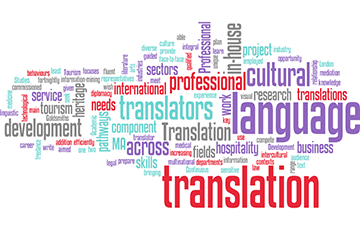The turnaround time of a project, or the total time between submission of a process and its completion, is one of the key components of analyzing a translation project. Besides the overall cost of the project, the turnaround time is almost always in the forefront of the client’s mind when submitting a document for translation. It’s not uncommon for the standard, ‘I need this done yesterday’ response when asking a client about their deadline requirements. When analyzing the document, the turnaround time can vary based on a number of factors including: length, content, formatting specifications, language pairing, and of course, time constrictions.
One of the most basic ways to estimate how long it will take for a translation project to be completed is to look at the total length of the project in words. Generally speaking, on a standard basis, a translator can comfortably translate up to 2,000-3,000 words per day for most languages. After the initial word count and expansion has been done, it is fairly simple to estimate the length of time the project will take to complete based on this scale. For small or ‘minimum’ projects such as birth certificates or student transcripts (which is fairly standard in the translation industry), AML-Global usually estimates a 2-3 day turnaround. Although some of these smaller translations can be completed within a day, it is always helpful to allow an extra day or so for quality assurance and/or editing purposes to ensure the best possible translation. It may also be necessary to extend the turnaround times if the translator is internationally based. Due to the difference in time zones, a translator in another country will most likely be on a completely different schedule than we are in the states. The difference in schedules absolutely needs to be taken into account to verify the translator has ample time to complete the project to the best of his/her abilities and to allow time for communication between the translation project manager and the translator. If anything needs to be shipped to the translator for translation or transcription (original copies, audio CDs, DVD, cassettes, etc), the duration of the delivery also needs to be factored into the turnaround time.
Another factor that is included in estimating the turnaround time of a project is analyzing the content included in the document. More specifically, if the terminology used in the document is technical or complex in any way, the document may take longer to translate. For example, a document including medical terminology or a manual outlining how to use a specific automotive part will require a translator with a history of experience in that specific background since that kind speech is generally not used in everyday conversation. Because the terminology included in technical and complex translation is so specific, the translator must choose each word meticulously to ensure that nothing is lost in translation.
Formatting also plays a major part when it comes to turnaround times. When a translator takes it upon himself/herself to format a document for viewing purposes, the process of formatting can add substantial time to the completion of the process. In some cases, the formatting/DTP work is done by a separate individual than the translator which can add more time to the overall turnaround of the project. Whatever the case may be, ample time must be given to both the translator and the desktop publisher to ensure the best possible final product. This especially needs to be taken into account when foreign languages using different characters or a different text direction (left to right, right to left, top to bottom, etc) is being used.
Lastly, if the client needs the translation completed by a certain time, this will clearly affect the overall turnaround time of the project to meet the client’s needs. If the client’s requirements are within the standard delivery time after all analysis has been completed, then the cost of the project will not be affected. However, if the client requires the translation to be completed sooner than the standard time frames, the project is considered a ‘rush’ and an additional cost may apply.
























